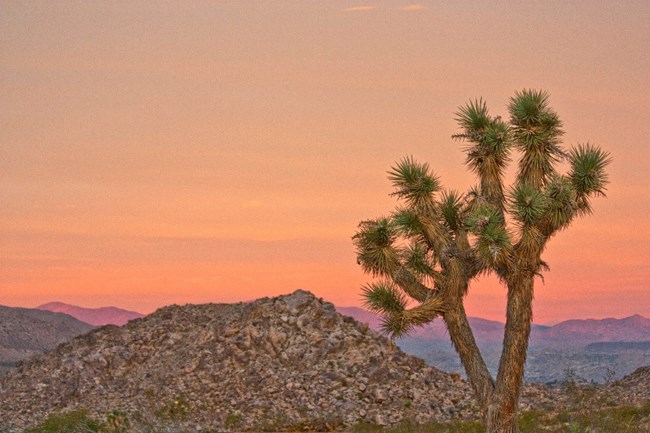Learn about NRCAs
The Natural Resource Condition Assessment (NRCA) Program provides framework, funding, and publishing support to parks to aid in the synthesis and documentation of natural resource conditions. Condition assessment reports are a tool to describe selected park resources, and record a snapshot of their current condition, identify trends, and identify potential or current threats and stressors. Understanding the condition and trend of natural resources is key for parks and NPS planners to appropriately prioritize and allocate stewardship resources.

Photo by NPS/Robb Hannawacker.
Traditional NRCA Report: 2019
The Mojave Desert Network includes eight national park units—totaling over eight million acres—within the Mojave and Great Basin deserts of Nevada, Arizona, and California. This is a land of extremes and stunning diversity: from Death Valley National Park— the hottest, driest, and lowest national park— to the sprawling waters of Lake Mead National Recreation Area. It is a land of Joshua trees, unlikely fish, fossil beds, dark skies, and rich American history. A Natural Resources Condition Assessment (NRCA) for six of the eight parks contained in the Network—Death Valley National Park, Grand Canyon–Parashant National Monument, Joshua Tree National Park, Lake Mead National Recreation Area, Manzanar National Historic Site, and Mojave National Preserve—was completed and published in 2019.The report was intended to provide scientific information on park resources that was requested by park managers and would be applicable to their planning and decision-making. Region-level and park-unit level objectives for the NRCA, and associated priorities for assessment, were identified primarily by managers from these six parks. Assessments within each of the parks were then conducted through a partnership of federal, university, and non-profit entities. The assessment emphasized the following resource topics and stressors:
- climate change |
- water availability for native wildlife |
|||||
- land use |
- feral burros |
|||||
- air quality |
- bats |
|||||
- the distribution and dynamics of non-native plants |
- mule deer (Odocoileus hemionus) in Grand Canyon–Parashant |
|||||
- habitat quality for Mojave desert tortoise (Gopherus agassizii) |
-connectivity and adaptive capacity of desert bighorn sheep (Ovis canadensis nelsoni) |
|||||
- fire |
While resource conditions varied across the parks and resources, the ability to assess the condition of many high-priority resources was constrained by data availability and by the lack of explicit management targets. The assessment suggested that future collection or updating of publicly available data and metadata from within the Mojave Desert Network parks on roads; air quality; distributions and abundances of non-native invasive plants across time and environmental gradients; and the distributions, movements, and vital rates of high-priority species would be especially informative.
For other reports and natural resource datasets visit the NPS Data Store.
Source: NPS DataStore Collection 7765 (results presented are a subset). To search for additional information, visit the NPS DataStore.
Last updated: February 25, 2022
